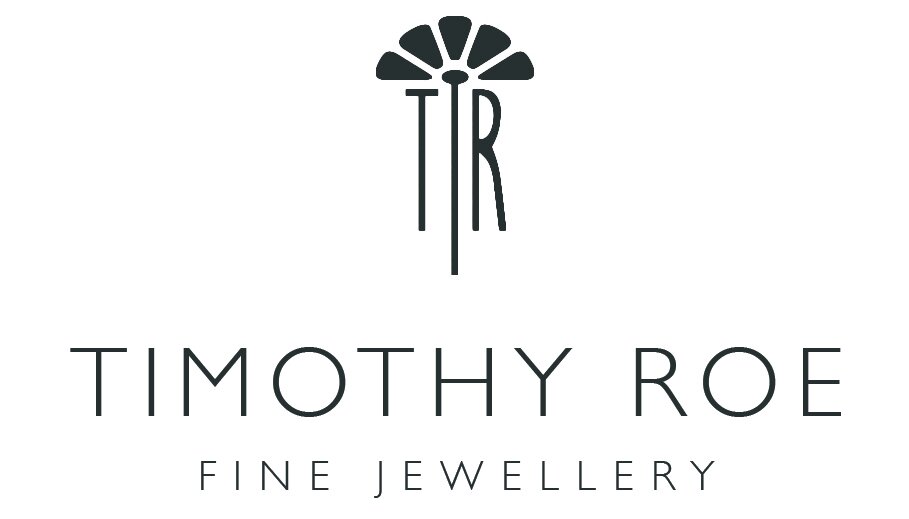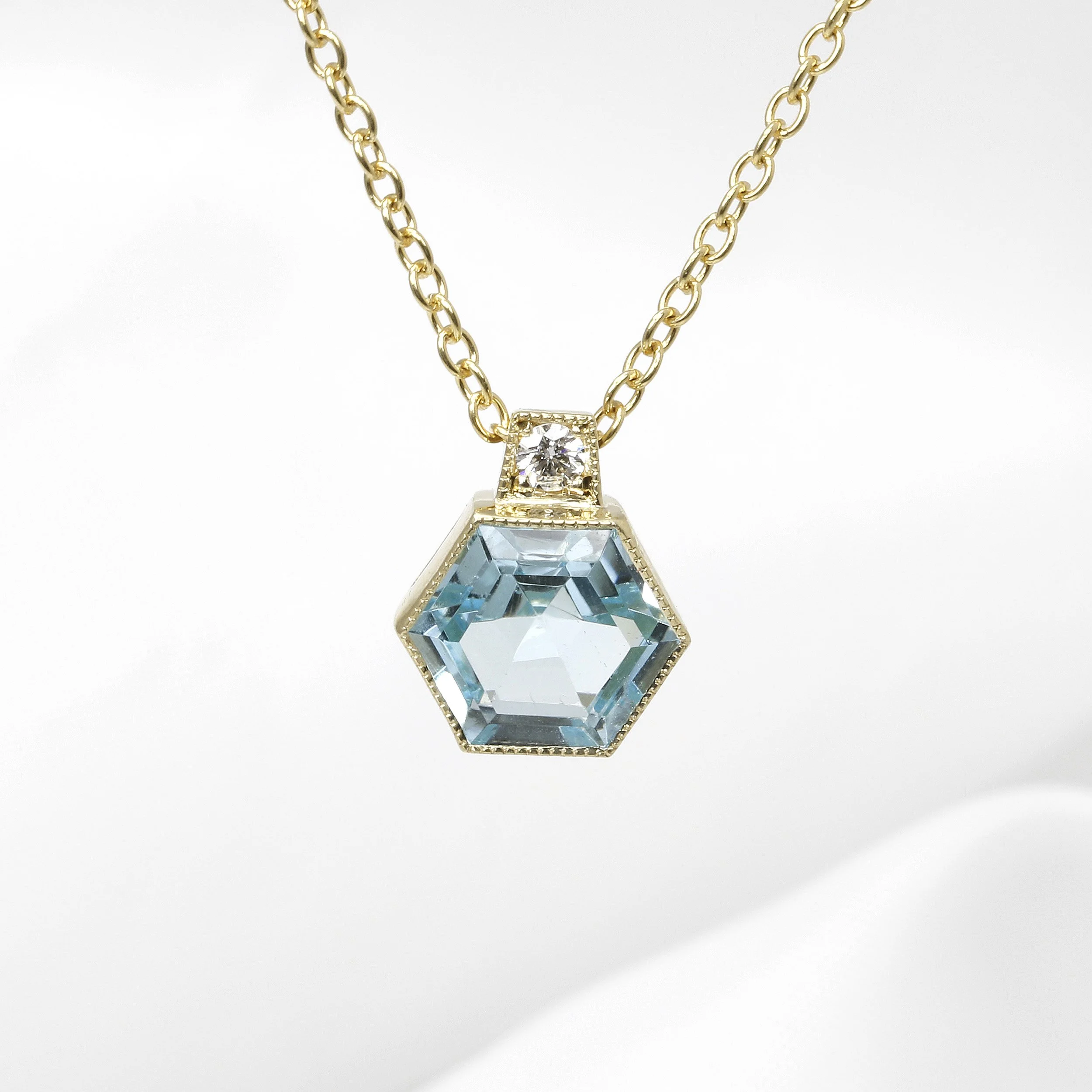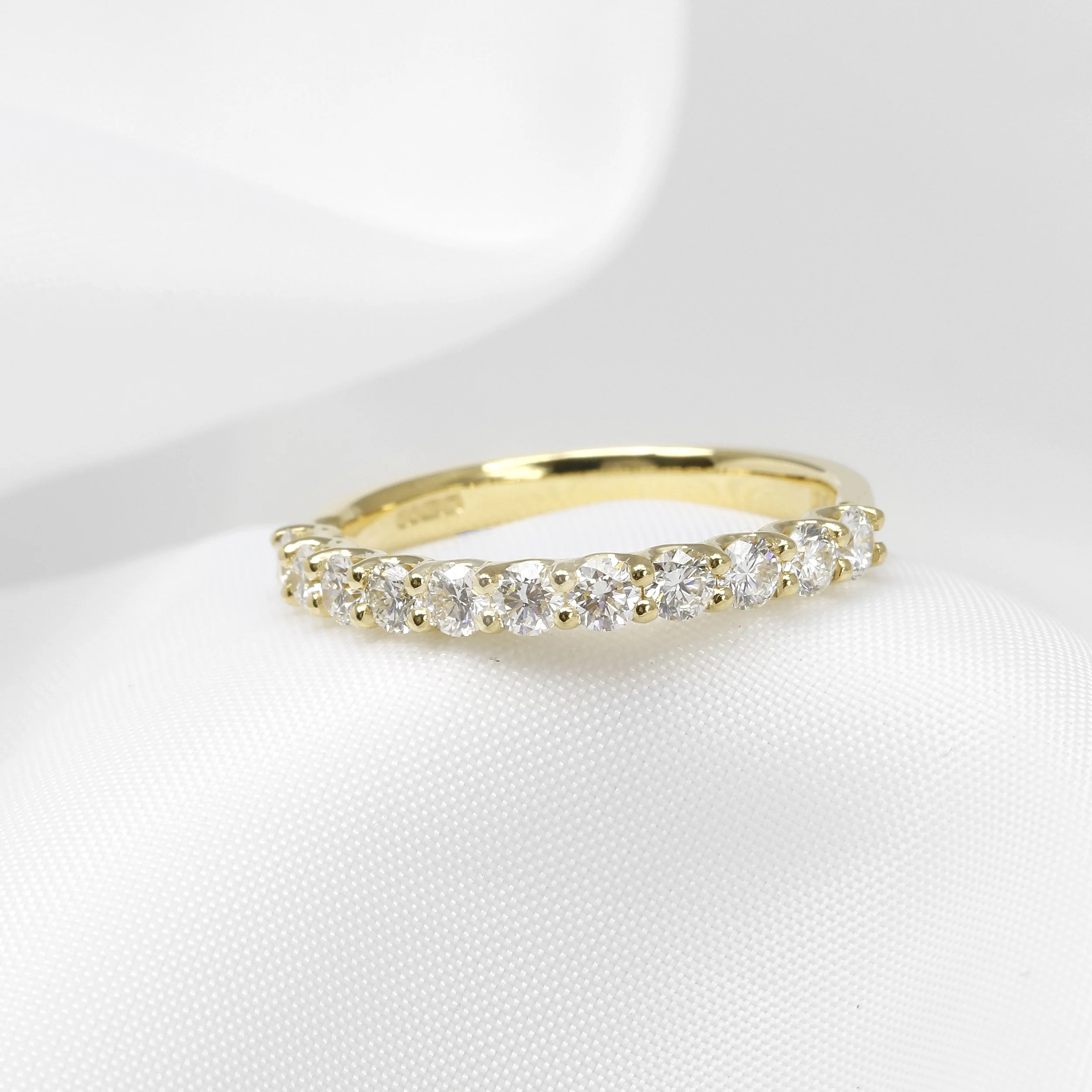How To Ruin Your Opals
We love opals. Hands down, we have one of the biggest opal jewellery collections in Chichester and many more stunning and vibrant loose opals to choose from if you want to create your own opal pieces! With their play of colour, those firework bursts and a kaleidoscope of colours that resemble a faraway galaxy, their lightning flashes make opals a really fun stone that catches both the light and people’s attention. We think they are just magical!
Opals can be found in several countries but the most common known locations are Australia and Ethiopia (Mexico and Brazil are other ones) and there are several types of opals and colours from pale creams, to yellows, to neon blues and bright fiery oranges.
White Gold Opal & Diamond Jardin Des Delices Ring
Like any gemstone, knowing how to care for your stones is vital to their longevity and when you are considering purchasing any gemstone jewellery we will give you care advice and let you know how best to care for your items so they will stay as beautiful and new for as long as possible.
However, sometimes accidents happen or customers forget or may ignore this advice and as a result gemstones become damaged. In today’s article, we are going to show you how to ruin your precious opals using a customer’s ring as an example. For all our opal fans out there, this one is for you.
A quick guide to ruining opals:
Submerge in soapy or heavy detergent liquids or do the washing up without gloves whilst wearing your opal rings
Clean with abrasive (wire) brushes and sponges
Put them in ultrasonics
Soak them in vinegar, lemon juice, baking soda or other acidic cleaners to wash them
Rub your opals with olive or baby oil to prevent them from cracking
Wipe alcohol or toothpaste over the top to clean off grime
Soak them in extremely hot water for a while before rinsing with very cold water
Put on your opal jewellery and then go crazy with perfume and hairspray
Apply hand cream nice and thick whilst still wearing your opal rings
Wear your opals when handling power tools and doing DIY and household chores
So obviously, this is a tongue in cheek list of what you shouldn’t do. Seriously, in case you didn’t get the sarcasm, please DO NOT do any of those things. We’ll tell you why in a second.
Introducing exhibit A:
Customer's damaged opal ring
Our lovely customer was really sad that her opal discoloured. Here in the photo you can see it lost its colour, went cloudy, murky and yellowy and looked like the surface had been scratched off. The play of colour is dull and it just doesn’t pop with that colourful fire anymore. When we asked her what happened she revealed that she just never took it off. She soaked it in water, exposed it to perfume and hairspray and it had come into contact with oils. She didn’t notice the slow deterioration until it was too late. The damage sadly couldn’t be reversed.
This is what her opal should have looked like.
Opal ring in 9 ct yellow gold
This is what her ring looks like now. It has a murky dull opaque colour instead of bright translucent or transparent. It has a waxy rough texture on the surface evidence of abrasion and scuffing and the play of colour has disappeared.
In order to understand why opals can be damaged easily you have to firstly understand their structure and how they are formed. There are subtle differences in the opals from Ethiopia and Australia, the main one being that Ethiopian tend to be more porous and able to absorb water and other liquids (we call these hydrophane) than the solid Australian opals. Australian have more ability to withstand water and chemicals and are also much more expensive but to be safe it is best to follow the what not to do guide below for all your opals, especially if you have doublet or triplet opals, regardless from where they originate.
For the quick and simple version on (hydrophane) opal formation and its characteristics:
Opals are porous and soft due to their chemical composition. They are not like other gems, are not a stone per se, but more of a hardened silica or silica gel. They range between 5 - 6.5 on the Moh’s hardness scale similar to glass. Opals are suitable for jewellery but they are delicate and should be treated and handled in the same way as pearls. They scratch easily, can break with vibrations and temperature changes and if oils and grease get inside them they can lose their colour, form a yellow misty film inside and look dull or dirty.
For the science fans out there the next paragraph is the more in-depth version on their structure and formation. If science isn’t your thing just jump straight to the OPAL CARE GUIDE below!
How opals are formed —for the science nerds out there!
Opals are made of amorphous (non-crystaline) silica and those used in jewellery can consist of up to 1 - 21% water depending if they are Ethiopian or Australian.
Australian opals form during the acidic weathering of rocks, or precipitate from water-rich fluids containing silica which fill cracks in rocks. They form through a chemical reaction involving silicon dioxide and water. As water runs down through the earth, it picks up silica from sandstone and carries this silica-rich solution into cracks and voids caused by natural faults or decomposing fossils. As the water evaporates, it leaves behind a silica deposit.
Unlike their Australian opals counterparts, Ethiopian opals are formed through volcanic activity rather than underwater sedimentation. They form in nodules within the volcanic ash in stratum between rhyolite layers. Australian opal forms deep underground, Ethiopian opal forms high up in the mountains.
But the general idea is that both are created through sedimentation and over a long period of time, the solution settles and water evaporates, allowing the gradual formation of layer upon layer of microscopic beads of silica.
Because they are spherical, there are tiny gaps remaining between the spheres (the same way when marbles are placed together in a container). Australian opals tend to have much more tightly knitted silica spheres than Ethiopian which explains its durability and why Ethiopian tends to absorb more liquids and be more gel like as opposed to a hard stone. The gaps between the silica spheres will be a mixture of water and silica. The spheres in an opal are not only remarkably uniform in size but are packed, in gem quality opal, in a very regular array. It is these tiny spheres and gaps which hold the secret of the opal’s colour because when white light hits these parts some colours are absorbed, some pass through and some don’t. Depending on where the light hits the silica spheres and which colour of the spectrum passes through will determine the colour you will see.
Opals vulnerability
Opals are extremely sensitive to shocks whether vibrational through vigorous movement or sudden fluctuations in temperature. Opals are very fragile, they can even crack if the water in them freezes whilst heat from intense light can cause fracture lines in opals (also known as crazing). A knock, bump or impact, even varying degrees of pressure and force, can shock and fracture the opal because it cannot absorb the energy and redirect it elsewhere. They are brittle as well as soft so finding the correct mount for your lifestyle and intended wear is important for protecting your opal.
They are also not scratch-resistant so generally are better suited to earrings and pendants unless you are very careful with your rings. Even a toothbrush can cause scratches on the surface so never use one to clean off grime. Household dust measures around a 7.5 on the Moh’s Hardness Scale and opals are 5 – 6.5 which means wiping dust off your opal with your finger could scratch the opal’s surface, therefore, storing your jewellery in a dust free jewellery box is advised.
Despite opals being made up of water, they need to be kept ideally away from water but do not store them near a heat source nor wear them in extreme temperatures. If their water dries out they can lose their colour or crack. Never soak your opals in water to restore them either, this will not work but will cause water to seep into the layers of silica spheres and cause misting/fogging and discoloration (brownish-yellow). They can also go transparent or white and lose their colours. Instead, keep them hydrated by storing them in breathable fabrics and avoid suffocating them in plastic. If you get your opals wet, dry them with a soft dry cloth and let them air-dry naturally for 24 – 48 hrs before wearing again or storing in a jewellery box. If they have been submerged in water you will need to leave them to dry for at least 5 – 7 days and then review the damage. Sometimes cracks form as they are drying as well as permanent discoloration.
Acids and chemicals are bad news for opals, certainly hydrophane Ethiopian ones. They attack the spheres dissolving them leaving you with a dull finish where the attack has taken place and if the surface of the opal has a crack or scratches on it the acid will seep in much faster and do more extensive damage. Once an opal has a fracture or sustained water or chemical damage it is rarely repairable and a new opal must be sourced.
The correct opal care guide:
1. Clean them the right way: In order to clean your opal jewellery, simply take a mesh cloth (larger spaces between the fabric yarns) soaked in room-temperature water and squeeze out the excess water, like in our pearl guide, and wipe over the opals to remove grease and dirt then pat dry with a dry cloth. Do not use cleaners or soapy detergents.
2. Last on, first off principle just like in our pearl guide. Avoid exposing them to hairspray and perfumes that contain alcohol and other acidic properties that can attack the silica structure.
3. Invest in proper storage and keep them dust-free. Do not store them in plastic wrap or bags but natural breathable fabrics like cotton, leather or textiles jewellery boxes.
4. Do not put them in direct sunlight or heat sources for a long period of time nor expose them to freezing temperatures.
5. Avoid water exposure, especially if they are Ethiopian opals, doublets or triplets, but if they do get wet and depending on the length of duration they were submerged allow them to air-dry naturally for several days before trying to assess the damage.
6. If in doubt seek professional advice! Let professional jewellers experienced in opals, like us, inspect and show you how best to clean your opal jewellery.
Opals, like pearls, do need a little more care compared to other gemstones but we think they are worth it! If you love opals but are unsure about the maintenance might we suggest choosing a solid Australian opal, like our lovely customer decided to do to replace her damaged Ethiopian one, which is hardier and you don’t have to worry quite so much about water and chemical damage. Don’t let the care and maintenance put you off these gorgeous vibrant gems! Come and talk to us about opals and see our opal selection! We can advise you on the right opal jewellery that will suit your lifestyle. Book an appointment here or just pop in to see us the next time you’re in town!
If you liked this article you might like to read some of these:










